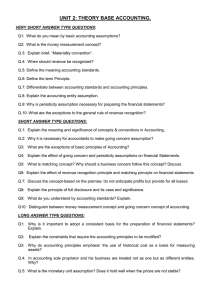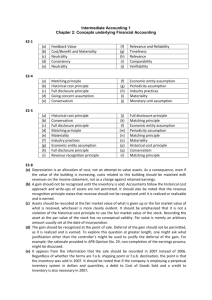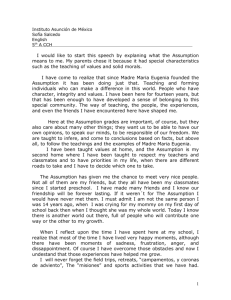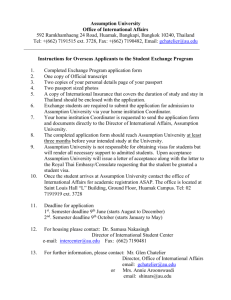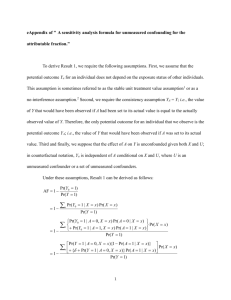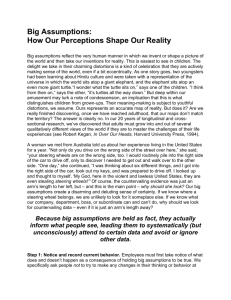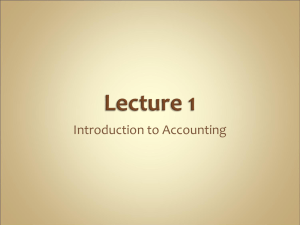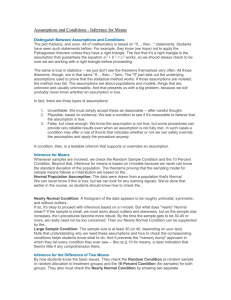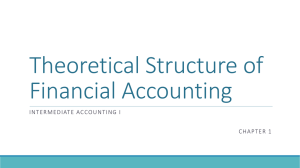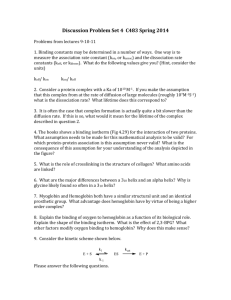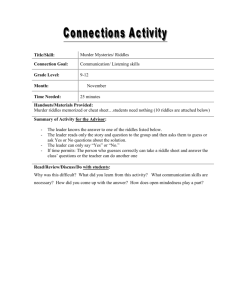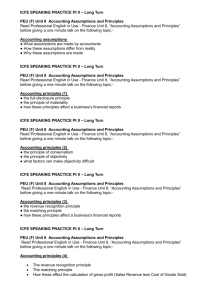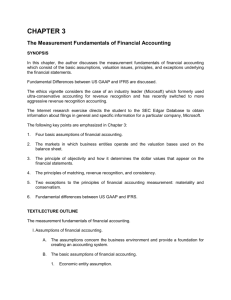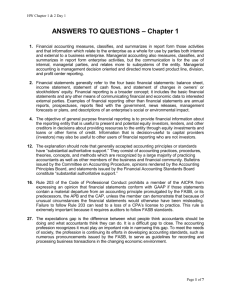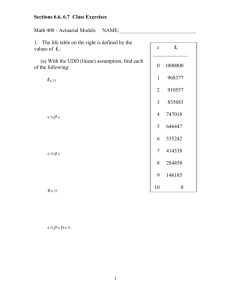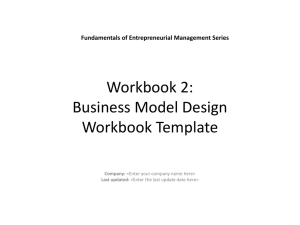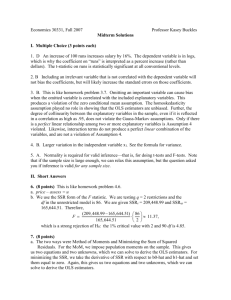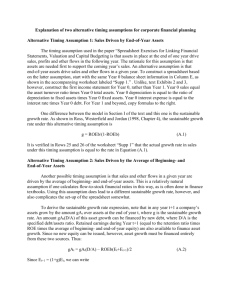FINANCIAL STATEMENTS
advertisement
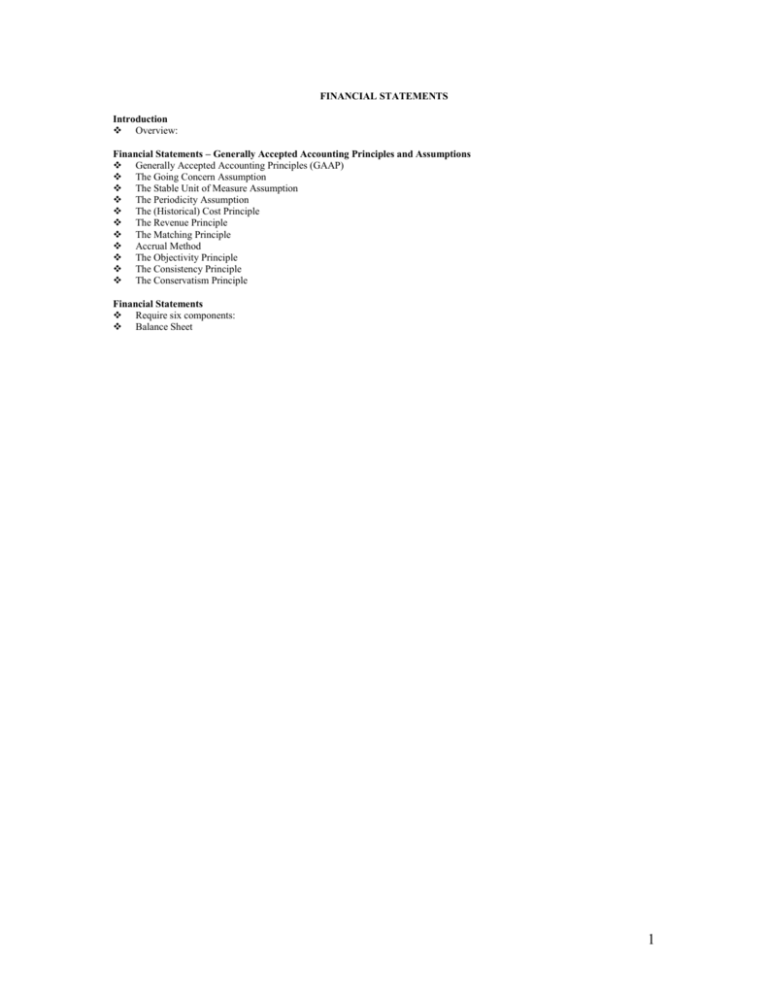
FINANCIAL STATEMENTS Introduction Overview: Financial Statements – Generally Accepted Accounting Principles and Assumptions Generally Accepted Accounting Principles (GAAP) The Going Concern Assumption The Stable Unit of Measure Assumption The Periodicity Assumption The (Historical) Cost Principle The Revenue Principle The Matching Principle Accrual Method The Objectivity Principle The Consistency Principle The Conservatism Principle Financial Statements Require six components: Balance Sheet 1 Introduction Overview: financial statements; communications included with financial statements; and techniques and perspectives used to interpret financial statements. Financial Statements – Generally Accepted Accounting Principles and Assumptions Generally Accepted Accounting Principles (GAAP) refers to the assumptions, rules and guidelines used to prepare financial statements. General accepted assumptions: going concern assumption (continuity) stable unit of measure assumption (unit of measure) periodicity assumption (time period) Generally accepted principles: cost principle (historical) revenue principle matching principle objectivity principle consistency principle conservatism principle The Going Concern Assumption is an assumption that the company will continue to operate for a period of time sufficient to carry out its existing commitments. use unless facts indicate company will not be able to continue. The Stable Unit of Measure Assumption basic measuring unit for financial reporting: is money $$$, which reflects an ability to command goods and services (“value”); and is assumed to be a stable unit of value. The Periodicity Assumption assume an indefinite life unless measuring operating progress; and changes in economic positions in short time intervals (“informed estimates”). The (Historical) Cost Principle Effects the balance sheet and the income statement. Assets: initially recorded in the accounts at cost without adjustment. when originally acquired, cost represents fair market value (fmv) if arm’s length. with time fmv changes. Recognition of a change in the value in assets and liabilities The Revenue Principle revenue: monetary expression of the aggregate of products or services transferred by an enterprise to its customers during a period of time. measure by the cash value of the product of service exchanged. money does not need to change hands at this point. revenue of an enterprise: is the value or consideration received from the provision of goods or services by the enterprise to a third party. The Matching Principle holds that expenses or costs directly assoc with earning revenues should be recorded in the same period in which the revenue is reported. Accrual Method revenue principle + matching principle = the accrual basis of accounting requires income to be measured in term of revenues earned (not nec collected) less expenses incurred (not nec paid) to general revenue. The Objectivity Principle refers to measurements or evidence that is unbiased and subject to verification by independent experts (e.g. price in arm’s length transaction). The Consistency Principle implies a particular accounting method will not change. 2 The Conservatism Principle estimating is not overstated or understated. Financial Statements Require six components: the communication (acc’t or auditor) balance sheet (financial position) statement of income (profit of loss) and retained earnings a $ flow statement set of comparative balances for previous fiscal period notes to financial statement Balance Sheet organizes accounts under: assets; liabilities; and equity. value stated at a point in time 3
